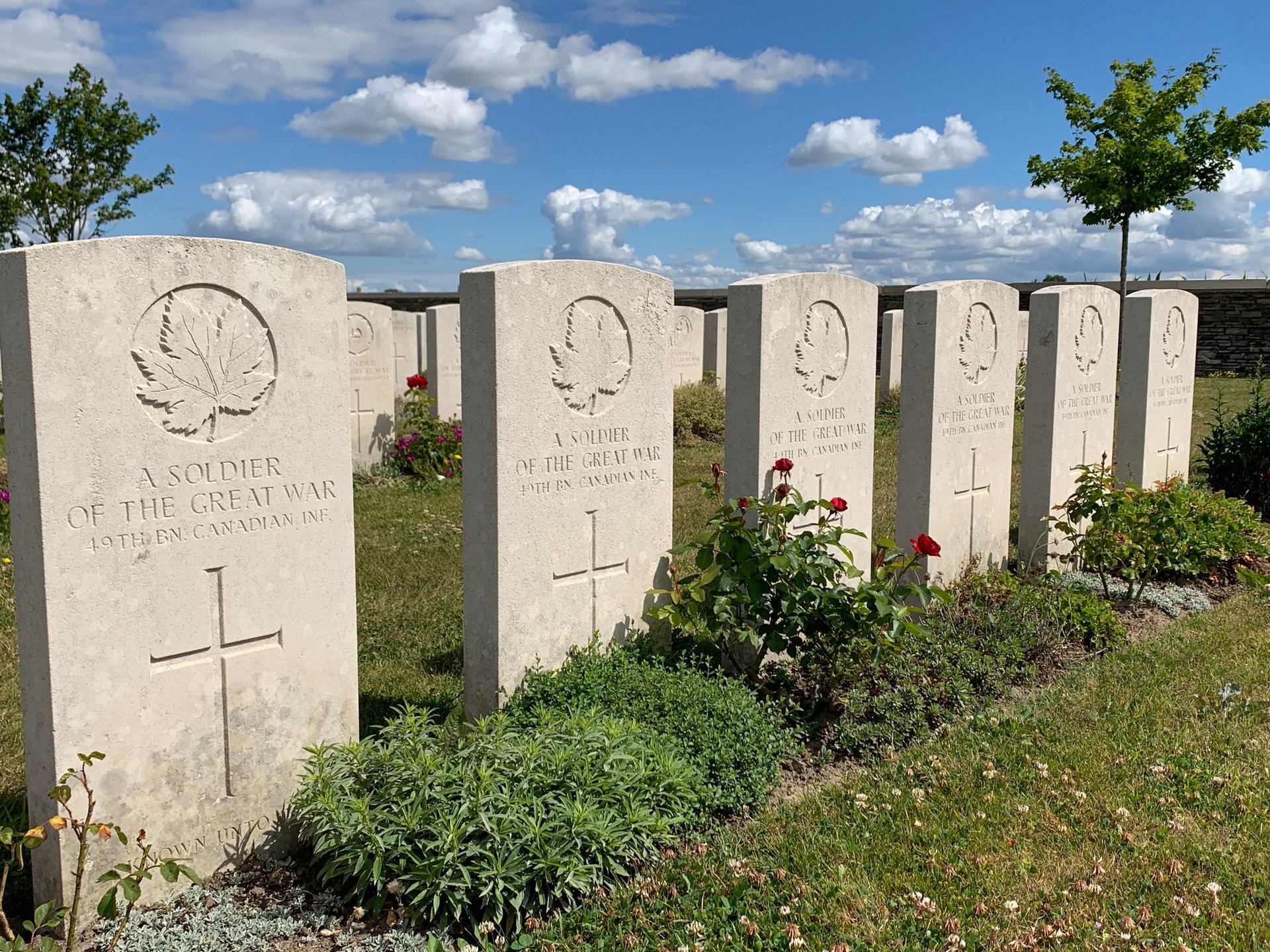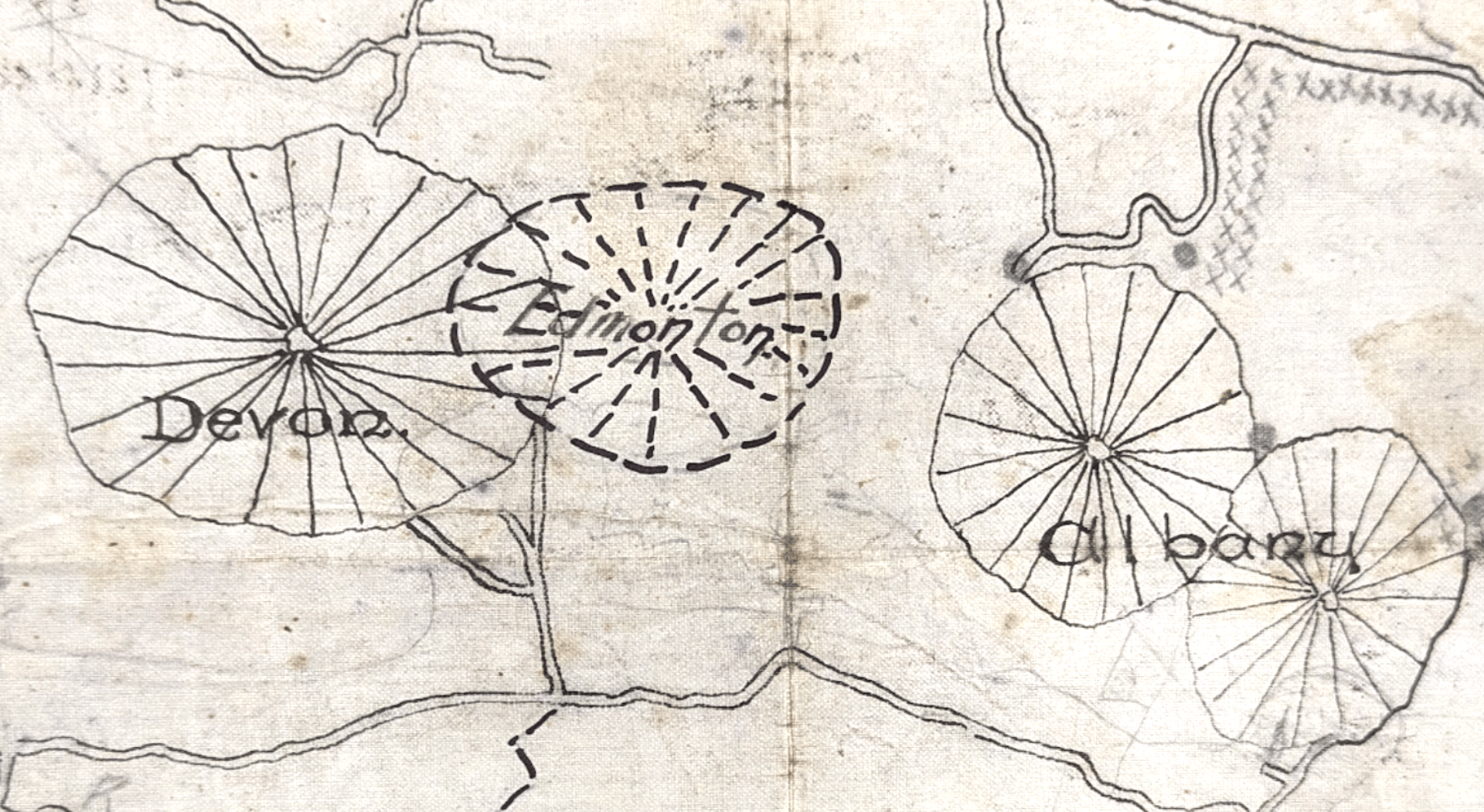
The Crater Line
October 1916 - February 1917
Vimy Ridge
Vimy Ridge had seen heavy fighting throughout the war and especially in 1915. French troops had tried to capture the ridge but ultimately fell short. In 1916, it became a British sector and in October of that year, Canadian troops began to arrive.
Edmonton Crater
On December 28th 1916, a mine was blown immediately in front of trenches occupied by the 49th Battalion (E.R.). Men from "D" Company rapidly occupied it. It became known as Edmonton Crater and a place of pride for each Fortyniner that served in France during the Great War.
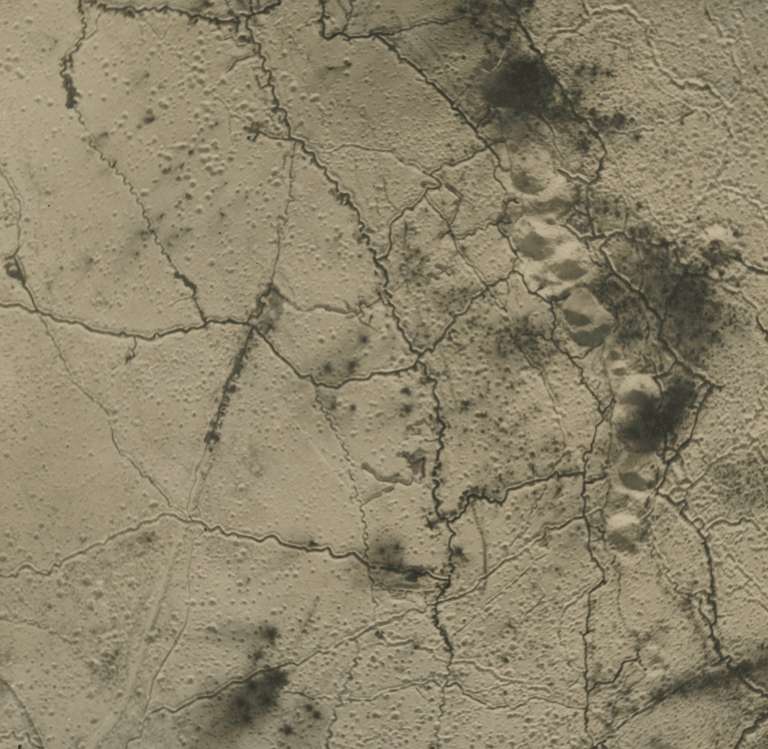

The Crater Line
No Man's Land on Vimy Ridge was especially narrow. Sometimes only 30 meters is all that separated the two Germans from the allies. Below Vimy Ridge was chalk which allowed easy tunnelling for the engineers. Underground warfare ensured, scarring the landscape and No Man's Land with massive craters caused by mine detonations. This part of the line was known as the Crater Line and it would become the new sector for the 49th Battalion (E.R.) to help hold.
A Christmas Truce
On Christmas day 1916, a handful of members from the 49th Battalion (E.R.) participated in a Christmas truce with the Germans in No Man's Land. Fraternization with the enemy was strictly prohibited but no court martial was held for the Fortyniners that participated.
The Chassery Raid - January 28 1917
In late January 1917, 21 members of the 49th Battalion (E.R.) pulled off one of the most successful raids. In two groups, the men breached the German line at Chassery Crater and in a manner of 15 minutes, annihilated the entire German garrison virtually without loss. It was viewed as one of the most successful raids and was especially impressive given that the German's were on high alert following a failed raid by the Princess Patrica's Canadian Light Infantry only a few hours earlier and a few hundred meters to the North.
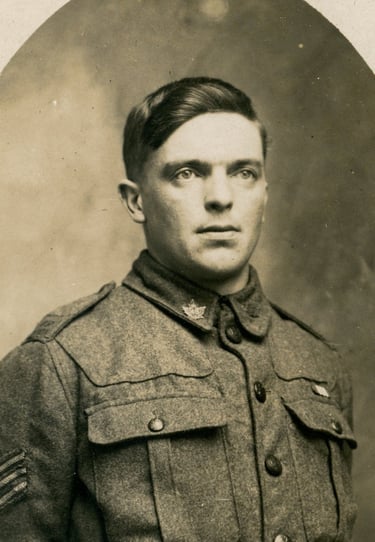

The chaos and emotions of the raid are vividly captured in personal accounts, such as Scout Sergeant Holloway's, who, commanding Party B, encountered the first dugout shortly after entry.
Scout Sergeant H. L. Holloway, 49th Battalion.
“I pulled the pin from a Mills bomb, and first letting the spring fly so there could be no question of it being thrown back, I tossed it down the steps, and others of the party dropped other surprise packets for any Germans who might be inside. Then I hurried on after several men who had passed me and came on a German post of three men, one of whom was lying dying on the ground. He had grabbed at his rifle, but one of our men had been quicker. “I just figured that if I did not want my wife to be a widow, I had to do something mighty quick” and he had made no mistake about it. The other two Germans had their hands up and were in a state of terror impossible to describe. They could only gasp out unintelligible sounds, and even “Kamerad” was beyond them. We gathered them up and kept going."
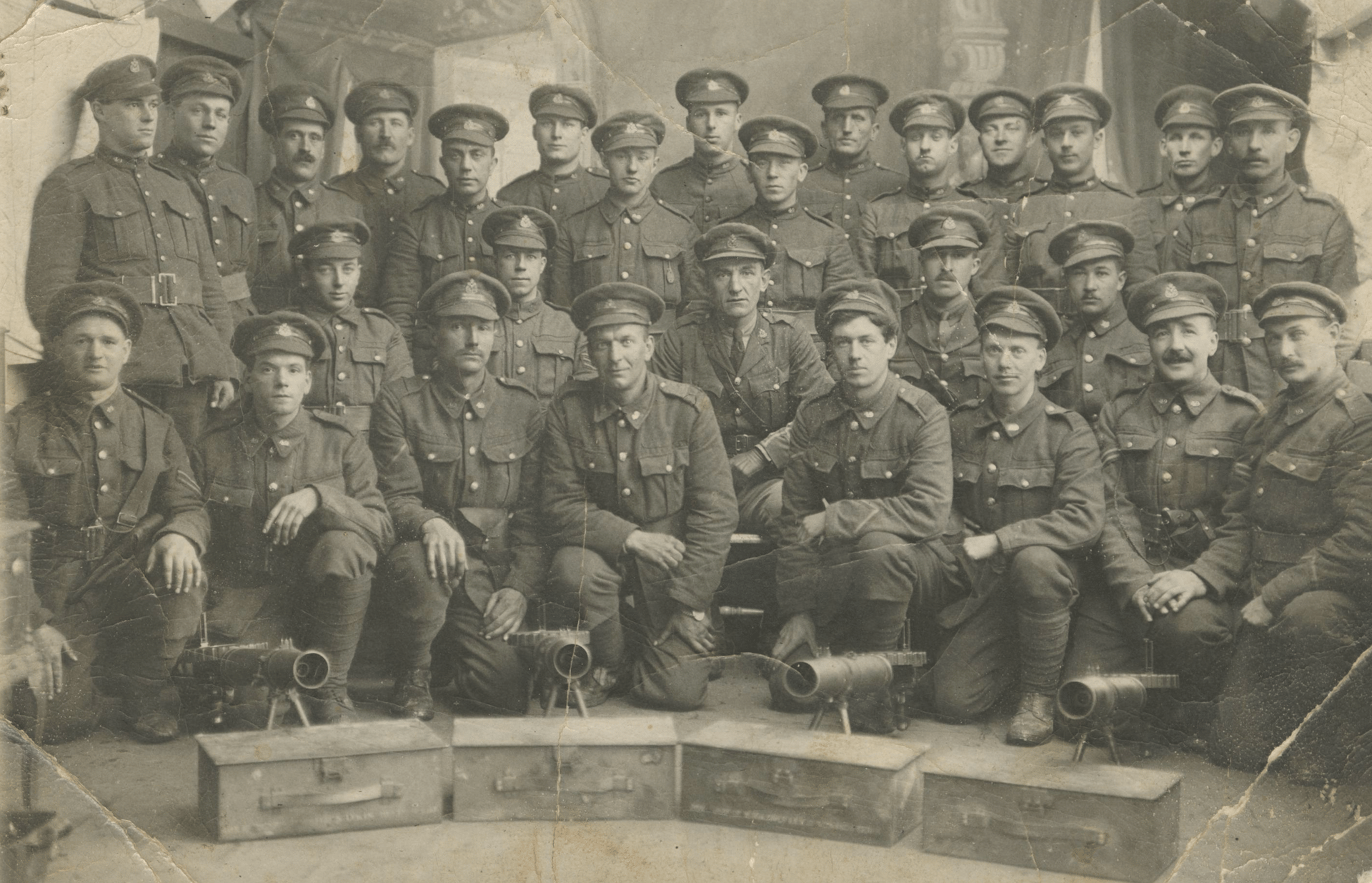
Battle of Vimy Ridge
April 1917
Training at Bruay
In March 1917, the 49th Battalion (E.R.) moved to the mining town of Bruary-la-Brasserie to undergo extensive training for an upcoming action: the assault of Vimy Ridge. After weeks of training and with the impending battle coming increasingly closer, the 49th Battalion (E.R.) was brought into the line to serve as moppers up for the 7th Brigade during the assault.
Corps Preparations
In preparation for the assault, extensive work was done at the corps level. This included artillery softening up defences but also the engineers to create large underground subways to facilitate troop and supply movements during the battle. Several Fortyniners were attached to the tunnelling companies, helping to remove the ubiquitous chalk from underground.

Voices of the Fortyninth - Vimy Ridge 1917
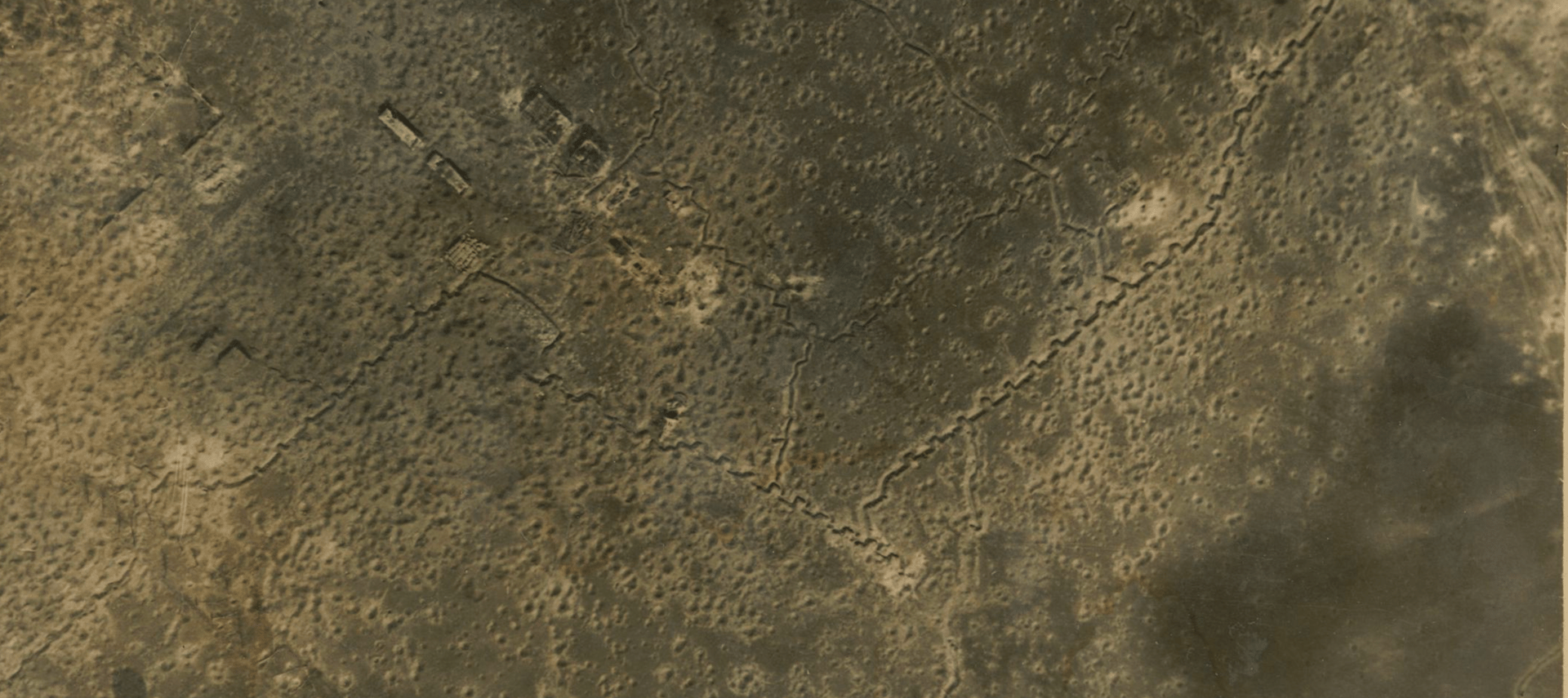
The Avion Raid
June 1917
The Avion Raid
Following the Battle of Vimy Ridge in April 1917, the German Army was forced to withdraw to the outskirts of modern day Lens. To maintain pressure and to gain intelligence, numerous raids were launched against the German trenches. In early June 1917, a large raid involving the 49th Battalion (E.R.) was planned against the German trenches in front of Avion.
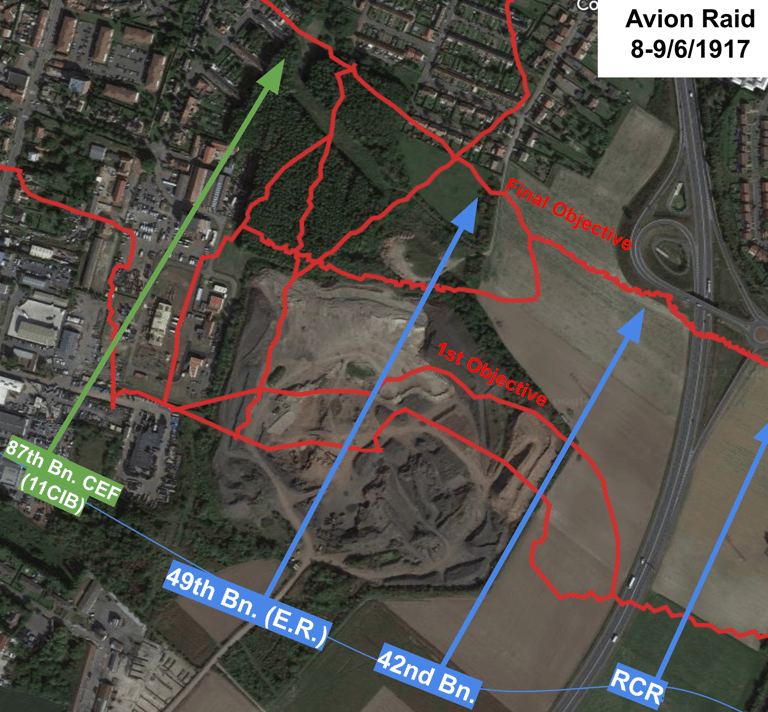

Zero Hour - 11:45 P.M.
The jumping off trench was reached on time and the whistles blew at 11:45 P.M. on the 8th of June 1917 signalling the start of the raid. Heavy clouds and rain made visibility challenging. Although the German defences were found to be shattered, it was found that some of the artillery shells were falling short causing friendly fire. The attack pressed on and after the 1st Objective had been captured by "C" and "D" Company's, "A" and "B" Company's pressed onto the final objective. All positions were captured.
Training for Success
Much like the Vimy operation several weeks earlier, the men practiced over tapes replicating the German trenches they were to assault. They were also briefed on the enemy defences. On the left flank, there was supposedly a brick lined tunnel which had the capability of holding hundreds of men. This would need to be dealt with.
A first hand account - Norman Arnold
"On getting out to follow the company I was thrilled at the sight which was like a display at some Tattoo in the orderly ranks the attackers were keeping; the scene being lit up by the bursts from the shells exploding. Here and there could be seen a man falling, killed; some would stagger, fall, get up and again advance, probably some of these had tripped over the broken wire or shell holes. Others were wounded and kept going on with the attack to the enemy trench for shelter.
The wire had been very well cut by the artillery, and no delay was experienced in making the objective here. It was a good job our boys followed close on the heels of the barrage for they were just in time to shoot the No. 1 of the German M. G. crew of 3 men who came out with their gun as soon as the barrage lifted. If our men had delayed a second the casualties would have been serious, even, if the attack had not been stopped."
A first hand account - Kenny Kinaird
" Tiny Boyle, Jim Meade and myself left the trench at the same point and the last I ever saw of them was disappearing into the smoke as we began our mopping-up. For some particular reason all Fritzies and our own artillery seemed to concentrate upon our little sector with the result that the front line was so obliterated that it was impossible to follow the original line. The brick lined tunnel must have been completely demolished as we were unable to locate it or any sign of the entrances. One dug-out was also destroyed, the tops only of both entrances being located.
From the second dug-out we obtained six prisoners and as most of our party were casualties five of them were used as stretcher bearers. The sixth prisoner either through fright or intention bolted in the direction of our forward troops with my runner G. A. Coonan and myself in hot pursuit. We had not travelled far when Fritzie connected with a high explosive and a second or two later Coonan and myself were knocked out by two different shells."
Results at the end of the raid
The raid had been an overwhelming success. It was estimated that 200 Germans had been killed whilst 35 were taken prisoner within the 49th Battalion sector. Casualties for the 49th Battalion (E.R.) accounted to 166 with 34 members of the regiment being killed or reported missing during the raid itself. Several would die of wounds later in hospital.
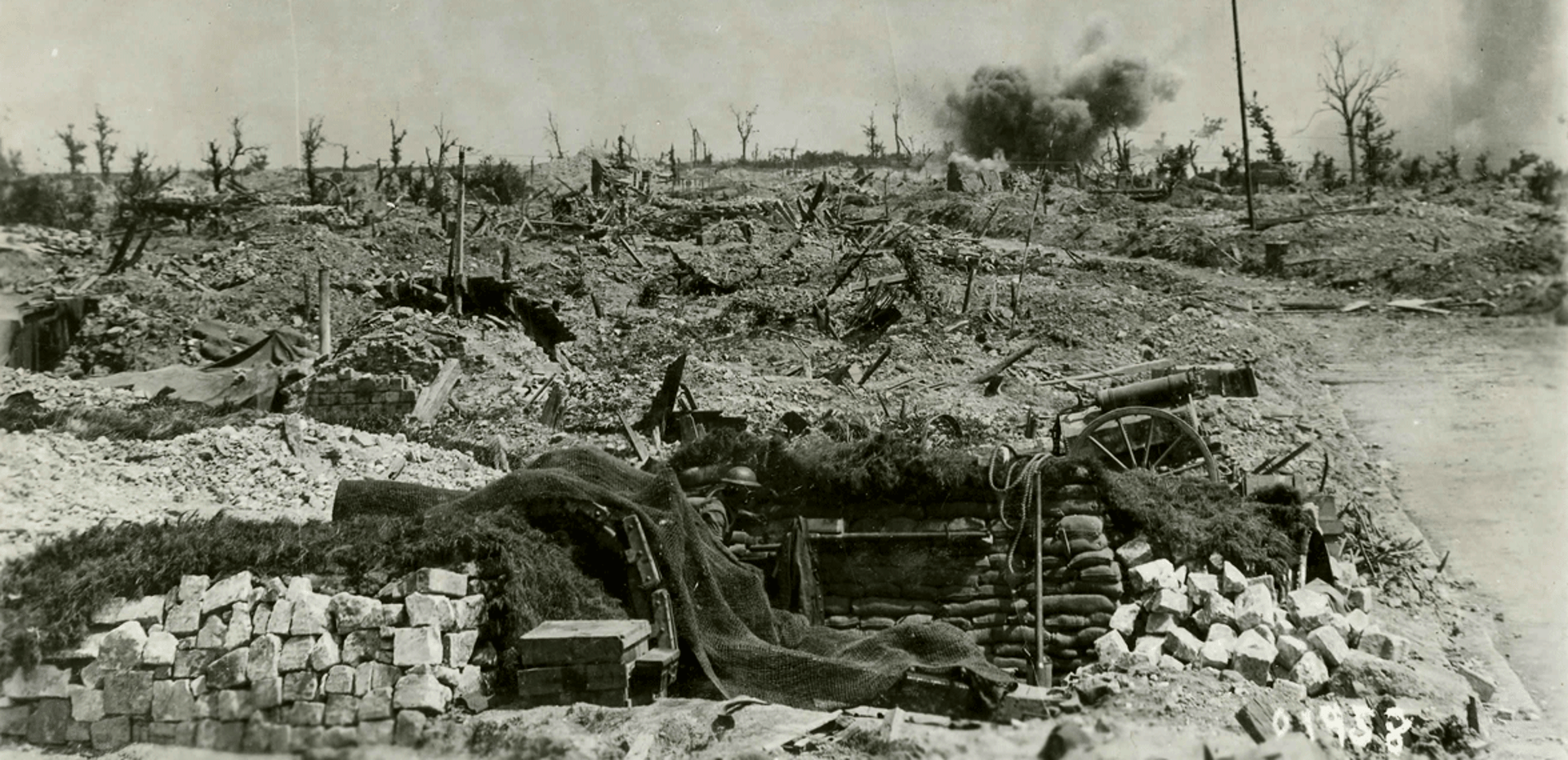
Hill 70 Raid
September 3rd 1917
The Battle of Hill 70
In August 1917, the Canadian Corps attacked and captured the village of Lens and Hill 70. Ferocious fighting and counter attacks left nearly 10,000 Canadian soldiers killed, wounded and missing. The 49th Battalion (E.R.)'s involvement in the battle was minimal. As part of the reserve brigade of the reserve division, it's contribution was largely that of wiring and work parties.
Trenches on Hill 70
In early September, the 49th Battalion (E.R.) moved into the trenches at Hill 70. The front-line trench offered minimal cover. “D” Company's right flank formed the boundary between the 49th and 52nd (Ontario) Battalion. A joint battalion raid was planned to be launched on the night of the 3rd of September seeing men from "D" Company raid a communication trench.
The Raid - Jock Henderson
Our artillery was hitting on all six, and at zero hour when the smoke was thickest, off went the raiding party from the post. The enemy post was found unoccupied, and in a few minutes the process of remodeling was completed. As it was really only a hop, step and a jump between the two posts, it was only a matter of minutes before all were back again. After the raid, Captain Hale, Sergeant Wells and myself started to wire our post in preparation for a counter attack, but I think we only got about three stakes and one strand of wire up, when Dan Wells got hit by a machine gun bullet. Fritz had evidently recovered from the “gas” attack and was literally sweeping No Man’s Land with machine gun fire. We managed to get Dan back to the post, but he had been mortally wounded, and died shortly afterwards.
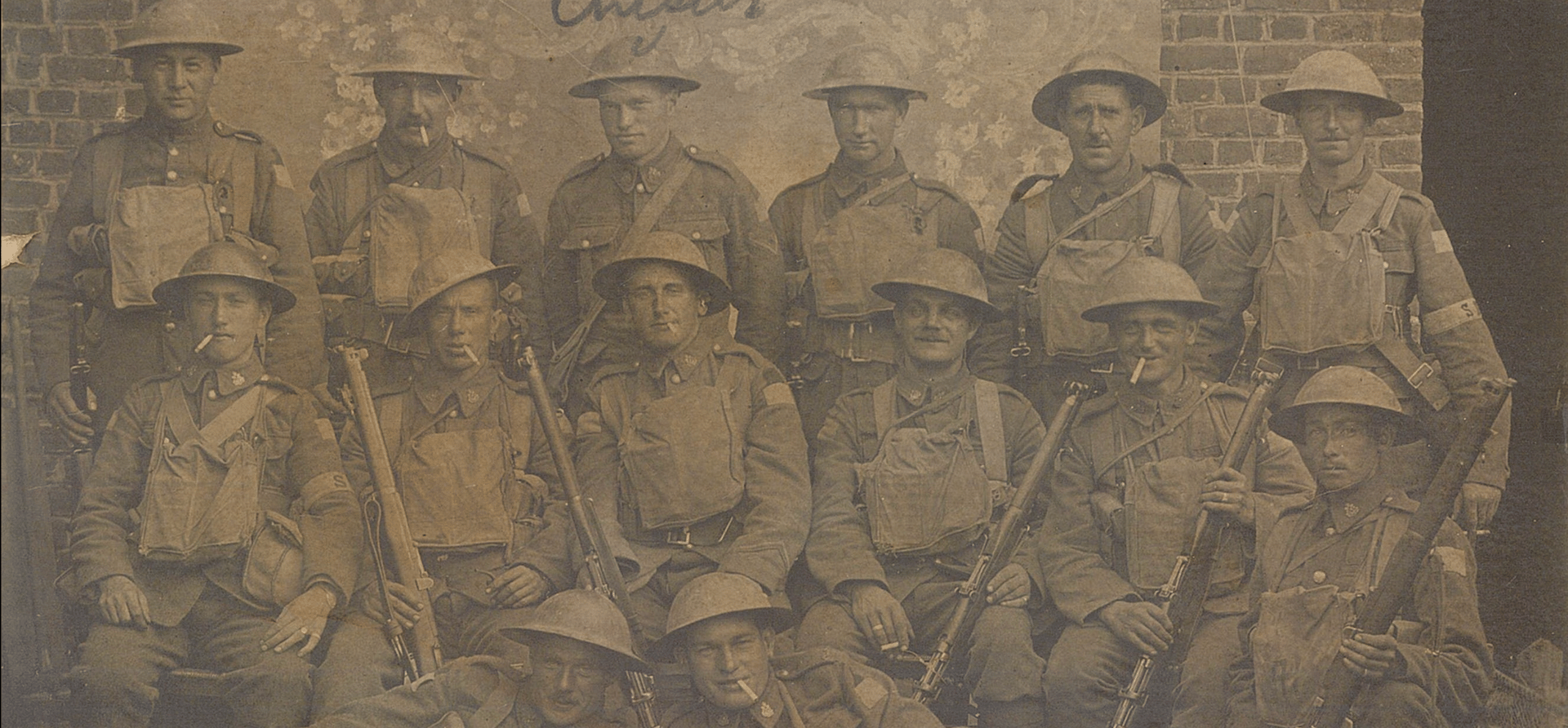
Passchendaele
October 30th 1917
The Third Battle of Ypres
In summer 1917, the British army focused on breaking out of the Ypres Salient in Flanders, facing heavy resistance and rain that turned the battlefield into mud. After months of fighting, Passchendaele remained out of reach. The Canadian Corps was then called to lead the final effort to capture the ridge.
The British Offensive in Flanders
The Canadian Effort
General Sir Arthur Currie opposed Canadian involvement at Passchendaele, estimating 16,000 casualties, but was overruled. Starting October 26, 1917, Canadians launched phased attacks, capturing and holding German positions. Successive assaults on October 30, November 6, and November 10 concluded the battle.
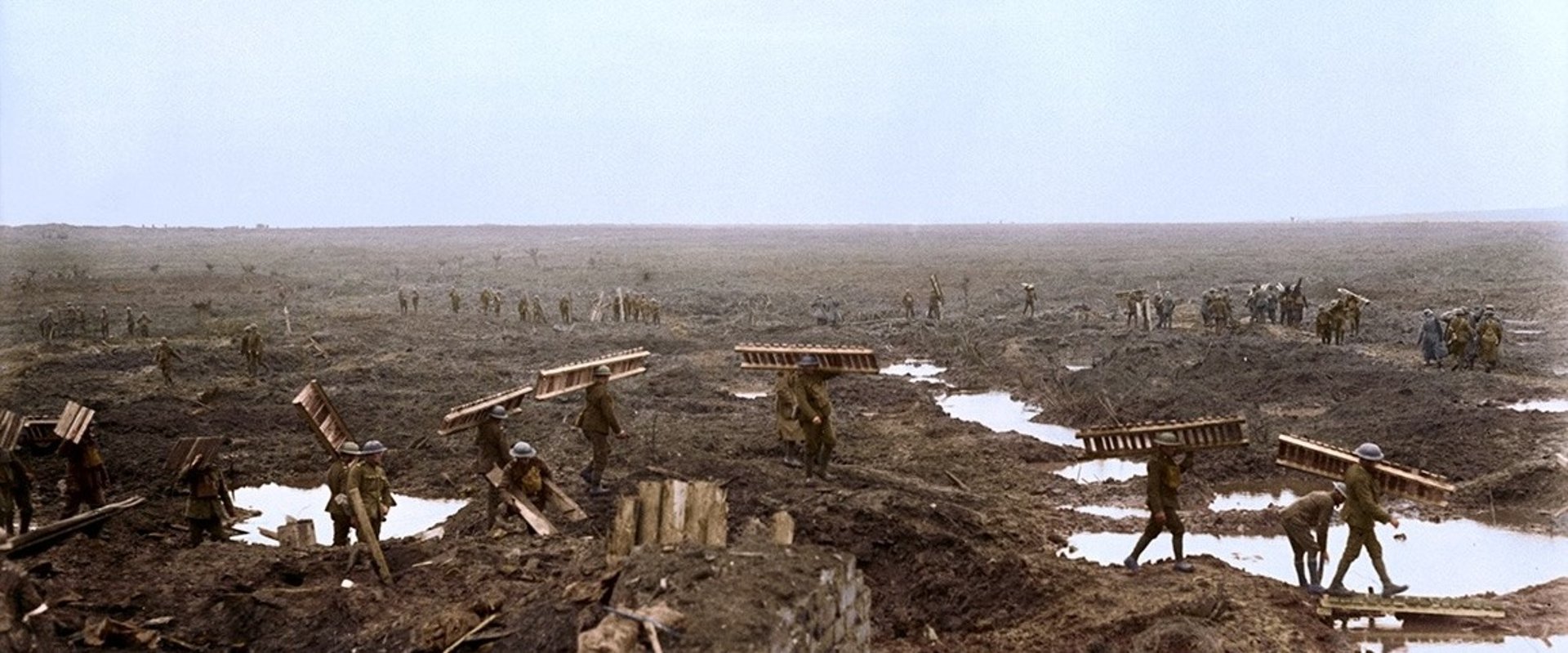
The 49th Battalion (Edmonton Regiment)
In early October 1917, the 49th Battalion (E.R.) departed the Vimy Front and began the journey North to Flanders. Travelling both by train and by foot they eventually arrived at Ypres. The early war Fortyniners found it nearly unrecognizable compared to 1916. Little was left of what once existed. It was a bad omen.
Leaving the Vimy Front
Wieltje and Gotha Bombers
During the approach march to Passchendaele, the 49th Battalion (E.R.) bivouacked near the village of Wieltje. On the 24th of October, German gotha bombers bombed the field occupied by "C" Company. Tragically men were killed and men were wounded. The first casualties of Passchendaele had occured.
Preparation
An attack was planned for October 30th, with the 49th Battalion (E.R.) in the center and Canadian units advancing on both flanks. Reaching the frontline the night before proved costly. Men were killed by artillery fire, and many slipped into water-filled shell holes and drowned. Worse, confusion arose about their starting position for the attack.
The 49th Battalion (E.R.) had set up a defensive line near Bornstraat. However, during the night, word came that their positions would be shelled by Canadian artillery. Forced to pull back, the men awaited the attack, now facing an even longer advance than expected.
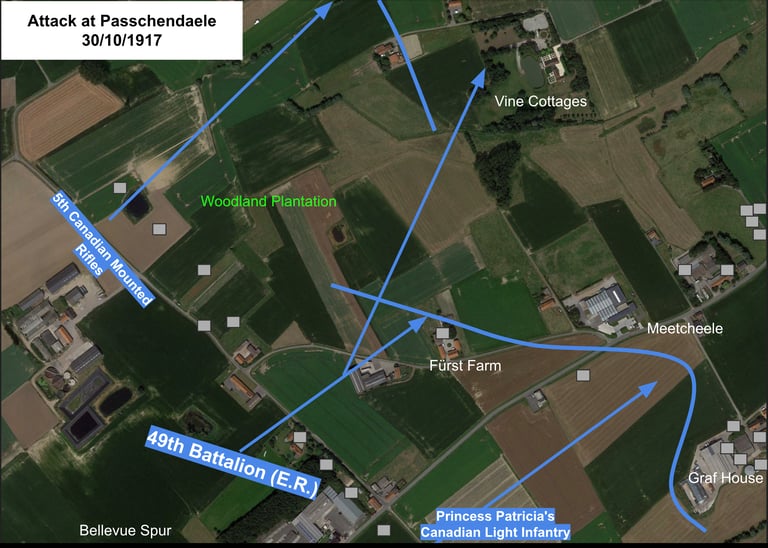

The Attack
Shortly before dawn, the attack began. As whistles blew and men advanced, casualties from machine gun and sniper fire quickly mounted. Two minutes later, as the second wave crossed Bornstraat, a heavy German barrage struck the road. Dozens were killed and many more wounded. Behind Bornstraat, blockhouses sheltered the wounded, but German artillery soon turned them into death traps.
In his memoirs, Harvey Daniel Duncan from Calgary, Alberta, described the chaos near Bornstraat:
“We were caught in a hellish enemy barrage. Around the pill box were dead bodies - some floating in the slime. We saw many kilts. A raw wind whipped up. It was dark and cold. Then a terrible flash and explosion. A direct hit on our shelter. We are blown up! No idea of time! I came to, stunned and numbed all over. Opened eyes to spot Charlie Collier hit in the arm and shoulder. I felt my legs! O.K.! We lay still for about an hour. Shells dropping all around… Thankful to be alive.”
Few survived, but those who did fought valiantly. A group of men had reached as far as Vine Cottages but were surrounded, isolated and then annihilated. Their bodies being discovered after the war where they fell. One member earned the Victoria Cross. Countless others received medals for bravery. Of the 588 who went into battle, only 142 walked out on October 31st.
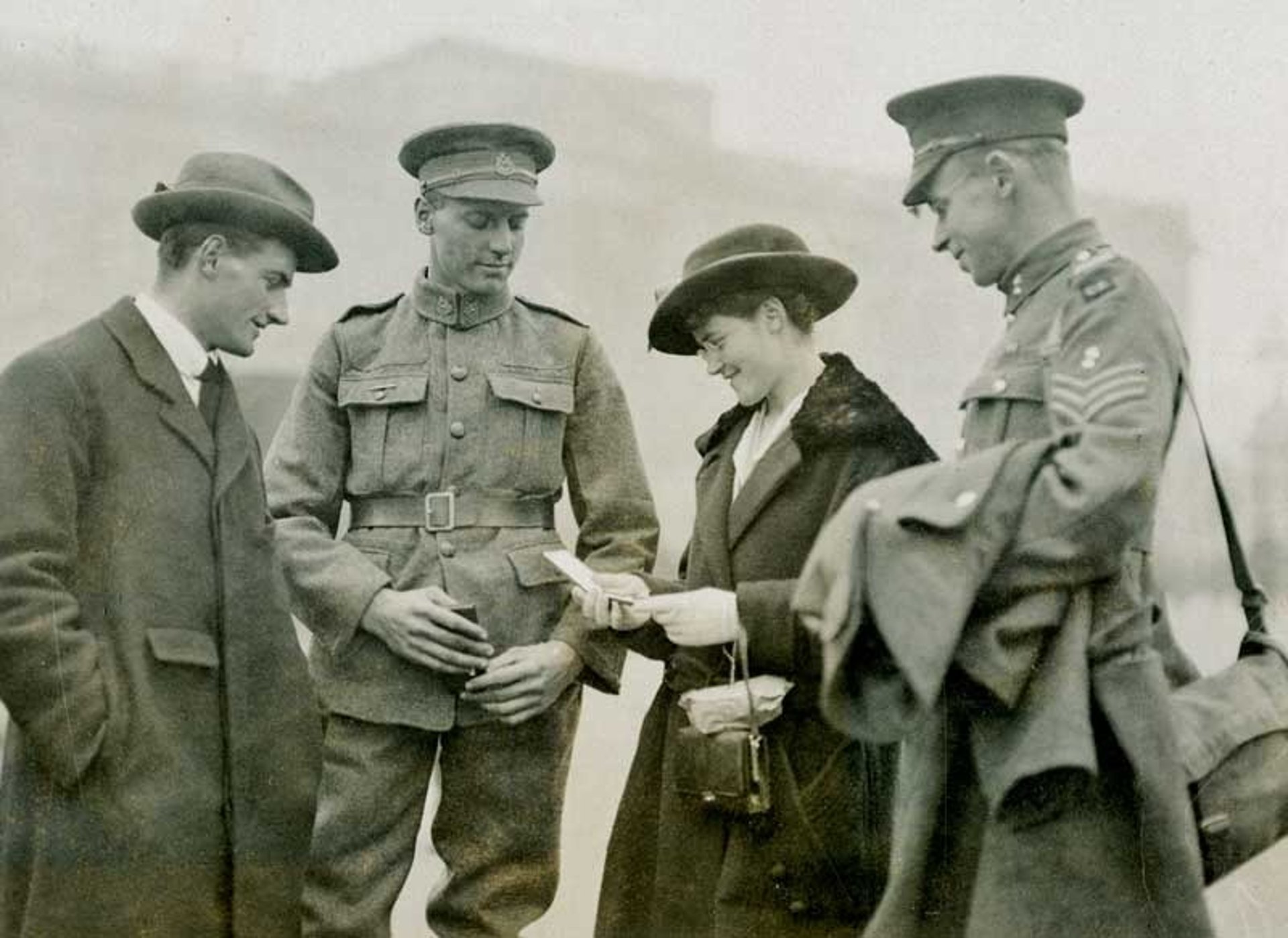
Cecil Kinross VC
30th October 1917
Victoria Cross Action
Under intense enemy fire, advancing troops were halted by a heavily fortified German pillbox. At this critical moment, Private Cecil Kinross displayed extraordinary bravery, earning the Victoria Cross. Positioned 50 yards from the pillbox, Kinross shed all but his rifle, bayonet, and bombs. Moving in short bursts, he advanced under fire, eventually reaching the pillbox’s aperture. He threw a grenade inside, stunning the defenders, then entered and neutralized the remaining crew. Emerging atop the pillbox, Kinross rallied his comrades with firm commands, urging them forward through the chaos of battle. His courage, composure, and tactical brilliance allowed the Battalion's advance to continue. Severely wounded to the head in the action, he discovered whilst in hospital he was to be awarded the Victoria Cross.
